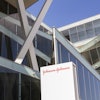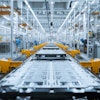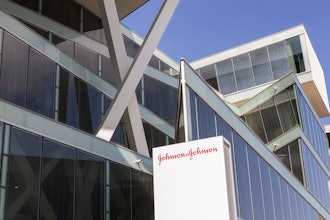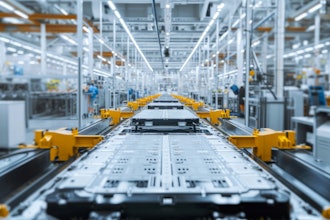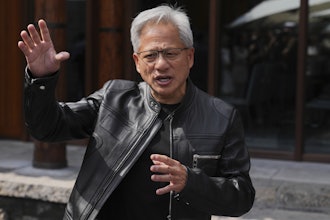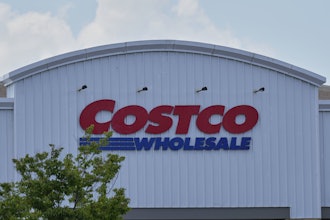This article first appeared in IMPO's June 2012 issue.
Every year the world becomes increasingly connected — borders are no longer barriers, and the difficulty of doing business anywhere on the globe becomes a little bit easier, and, perhaps, a little bit cheaper. For an American manufacturer, this globalization has opened up countless opportunities to expand production beyond the States and benefit from certain economic advantages simply not possible in America: labor costs, lower taxes, cheaper inbound goods, among others. And it’s changed the standard way they do business.
And many companies like non-spill bowl manufacturer Calibowl, based out of Hayward, CA, have long assumed that China is the best place to manufacture because “that’s what everyone else does.” But as Calibowl found out three years into their off-shored production, and what many others are discovering in parallel, the costs that must be accounted for with a global supply chain — not to mention their fluctuations — are becoming increasingly complex.
On the back of these changes, a number of companies have begun to rein in all of these costs. Harry Moser, founder of the Reshoring Institute, calls these new calculations the “total cost of ownership,” and he claims that knowing this figure is critical in truly knowing which manufacturing location is most viable for a particular business. He argues that most companies rely on a select few data points while ignoring a swath of other costs that could be devastating to the company’s bottom line.
Jeff Wissink, a partner at Navint Partners, LLC, agrees that this “new math” is critical to the future success of any manufacturer who has practiced, or is thinking about, off-shoring. He says that over the last few decades, many manufacturers outsourced their production because they were willing to risk the well-known communication channels and privacy controls for the sake of price. The difference, he claims, is that “American companies are getting smarter about their own cost structures,” which has led many of them to second-guess, or at least reassess, the nature of their overseas production.
What costs are changing between an American operation and one based overseas? Michael Zinser, a Partner and Managing Director with the Boston Consulting Group, says that the biggest change is in labor costs relative to productivity, which he calls the “productivity-adjusted wage cost.” Regarding China in particular, he says, “As wages rise in China, as the currency appreciates relative to the dollar … we’re finding is that the relative gap on a productivity basis is narrowing.” This is possible primarily because “the U.S. tends to have more automation and more advanced tools.” Efficiency efforts, like Lean or Six Sigma, have also contributed to the average productivity of the American employee.
All those additional costs for doing work off-shore can add up, according to Moser. He agrees with Zinser that recent fluctuations in currencies, both here and abroad, are making the total cost situation more confusing. Oil prices are rising, which causes the cost of freight to change on two fronts: first, the cost of oil, which providers pass on to their customers, and the speed of freight. In order to save gas, many cargo ships are simply taking longer on their journeys across the oceans — similar to driving a car at 65 instead of 80.
There are some more intangible costs as well, Moser says. Intellectual property theft is a rising problem in many countries where manufacturing assets are typically off-shored. In many cases, there’s no real limit on the potential damage a major IP theft could cause a company, particularly when sophisticated production processes or design decisions are on the line. Moser also says even the local costs of off-shoring are rising — Americans are increasingly less willing to sacrifice additional “life” time to manage their overseas “work.”
For Calibowl, the out-sourced supply chain started to take its toll on the relatively small company. When they needed to be flexible, they found themselves at the mercy of long lead times. Richard Stump, Calibowl co-founder, says, “It’s 90 days before you can get any product. Your opportunity cost gets killed.” That, among some of the other cost complexities, was one of the primary reasons the company’s executives started to dig into their data. Could manufacturing in the U.S. really be cheaper?
Crunching the Data
Moser, as the founder of the Reshoring Initiative, is at the forefront of the movement to encourage manufacturers to be aware of the total cost of their manufacturing assets, whether they’re based in the U.S. or a different country. In order to aid his cause, he helped developed a piece of software called the TCO (Total Cost of Ownership) Calculator, which helps guide manufacturers through 29 different data points.
Moser says his TCO Estimator software begins with fundamental numbers, such as unit costs, duty rates, and number of shipments before it “adds in first a series of ‘hard costs,’ like the carrying cost of inventory, or the travel cost to go check up on the supplier — the numbers everyone would agree are real.” If you ask Stump, this is where many companies stop — many companies simply compare the cost of buying goods made in China against a comparable good made in America, see that China is 35 percent cheaper, and continue to claim they’re in the right place.
Stump explains, “What they don’t consider is freight, opportunity cost, like how much inventory they’re holding, what their warehousing cost is, or how many people they have employed just to manage that supply chain.” But the TCO Estimator has at least twenty more points to calculate.
Next up is an analysis of risk, including “the risk [a company will] have to air freight instead of the planned surface rate if they get late, the risk of natural disaster, political instability, or intellectual property,” says Moser. Finally, the software encourages manufacturers to make solid estimates at various strategic costs, such as the price of separating engineering from manufacturing, or how a “green” initiative might lessen their global footprint, and so on.
Zinser says most of the “hard costs” are actually pretty easy to find. Manufacturers already have the correct unit cost, and a comparative one for the opposing location is generally just a quote away. Wage rates and currency changes should also be easily accessible data. Zinser adds that one should also be able to calculate how output levels and productivity have changed in accordance to wage or currency fluctuations.
When it comes to the specific costs of a global supply chain, carriers — the companies that ship goods across oceans and down long stretches of highway — can provide logistics costs for various supply chain scenarios. If one is struggling with finding labor rates for a facility in America, Zinser says that local governments or other nearby companies can often provide the necessary insight.
That leaves the swath of “intangible” costs — or cost benefits — of manufacturing overseas as opposed to America. While many might dismiss these costs as not relevant to the data-driven decisions to move manufacturing from one part of the country to another, Moser argues that they’re necessary to making the right decision. He says, “Our system, in effect, itemizes the things they should be considering, and should have been considering all along. We give them the framework in which to do it.”
Of course, there’s still some flexibility. The great thing about Moser’s TCO Estimator software is that if one isn’t comfortable making estimates about the cost of intellectual property theft, or the green benefit from a smaller supply chain, they can leave those figures at $0. By doing so, the Estimator will only take into account hard, data-driven costs, which is perfect for manufacturing’s most stringent “bean counters.”
Wissink firmly believes that “good companies make decision on data,” but he admits that there are a number of other benefits from re-shoring jobs, namely PR and goodwill from consumers. Often, the cost margin between American and off-shored manufacturing is only a few percentage points in the foreign favor. He asks, “Do you try to put some sort of financial benefit to these intangible things? I think if you can pile up a preponderance of those intangible benefits, and you can get the cost numbers close, the intangibles can push [you] over the edge.”
Calibowl: A Case Study
It turns out that it was exactly this “preponderance” of intangible benefits that lead Calibowl’s executives to reconsider their original decision to manufacture in China. After three years of off-shored production, they were beginning to see a number of interesting trends. Stump says, “One of the biggest was that our international customers in Korea, Singapore, and Canada would not buy the product unless it was made in U.S. They did not want a made-in-China product.”
Stump says quality was incredibly important to those overseas customers, and whether or not their assumptions are true, they believed that a “Made in the U.S.A.” product had an inherent quality that couldn’t be matched by Chinese suppliers. Stump says Calibowl began to realize if they “brought manufacturing back to the U.S. it would open up more broad opportunities than what [they] had with China-based manufacturing.”
The supply chain was also becoming unmanageable for the small-but-growing company — they just didn’t have the necessary bodies to keep on top of the changes halfway around the world, which made certain deals nearly impossible. Godiva approached Calibowl with the desire to feature the bowls in all of their retail stores, but when Stump and his colleagues hammered out the deal, the freight would have effectively cost more than the relatively small order itself.
When Calibowl began to make the cost case for moving manufacturing out of China, they went about it in the tried-and-true fashion: Excel spreadsheets. Stump says, “We did a cost analysis. We created a breakdown on the costs in China and the U.S. The factors we considered were cost of goods, and of course it was higher in the U.S. We then included freight from China, and then we looked at other things like inventory carrying cost.”
And that analysis revealed some pretty interesting numbers. He says, “Literally, just with freight, inventory costs, and raw costs, we were only about 5 percent higher in the U.S.”
But more than anything, Calibowl wanted to bring jobs back because they felt “it was the right thing to do.” When they saw that the cost difference was in the single digits, it made their decision to approach the board of directors with a proposal to move 39 tools back to the U.S. a little easier. Even now, Stump admits it was “a huge risk,” but it’s certainly worked out in the end.
By having their operations just down the road, Stump says Calibowl’s turnaround time has decreased dramatically, and they don’t have to hold nearly as much inventory as before. They’re more agile than ever, because making a production change doesn’t involve getting on a plane to China. Stump says, “And since then, we’ve been able to drive down our packaging suppliers and our molders — we’ve been able to automate a lot of things, to bring labor out of the costs — and now I am cheaper by 2 to 8.5 percent manufacturing in U.S.”
Naturally, there are certain businesses and industries that will most likely never return to America. Zinser says that instead of re-shoring jobs, apparel and footwear manufacturers will simply move to the next low-cost country, like Vietnam or Cambodia. And even Stump admits that high-tech goods, like the kind Apple produces, are likely to stay at Foxconn and its massive industrial cities, mostly due to the intensive assembly labor that’s required. Many companies, even after this intense analysis, may find that they’re best off staying in — or moving to — China.
Wissink sees the recent re-shoring efforts as a “trend,” but one with real economic benefit. He says “it only makes sense” that certain functions will soon be re-painted as more economical in America. And Moser, more than anything, wants manufacturers to be completely aware of their total costs, and not just the ones that make headlines or take up the biggest piece of the pie. That work will make them a stronger company, no matter where they end up.
But it’s clear what worked at Calibowl — by taking a hard look at all of the relevant data, they were able to reveal operational efficiencies in their business while becoming learner and more agile. Even if their total cost analysis told them to keep manufacturing in China, they would have been all the stronger for knowing exactly why, and for how long that might still be the truth. The global economy isn’t getting any simpler.
